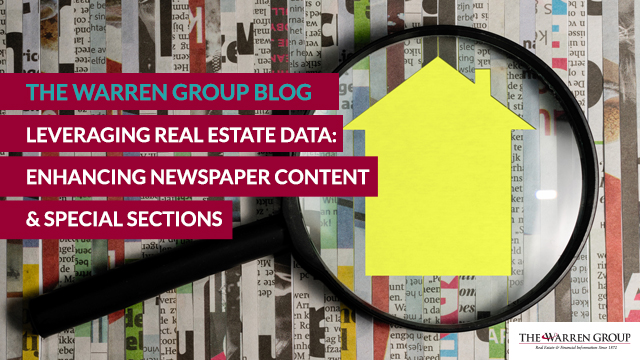In the ever-evolving landscape of journalism, newspapers, and publications are constantly seeking innovative ways to engage readers and deliver compelling content. One such avenue that holds immense potential is the integration of real estate data into their storytelling. Real estate data, rich with insights and trends, can be a goldmine for creating captivating articles and special sections that cater to readers’ interests. In this blog post, we’ll delve into the ways newspapers can harness real estate data to elevate their content and develop engaging special sections.
Understanding the Power of Real Estate Data
Real estate data encompasses a wide array of information, from property prices and market trends to rental rates and neighborhood demographics. This data provides invaluable insights into the dynamics of local housing markets, property values, and shifts in demand. By utilizing this data, newspapers can create content that resonates with both homeowners and potential buyers, offering them the information they crave to make informed decisions.
Crafting Data-Driven Articles
Integrating real estate data into articles can add depth and credibility to your stories. Imagine a series of articles exploring how changing neighborhood demographics impact property values, or deep dives into the effects of recent infrastructure developments on local housing markets. By analyzing and presenting data-backed insights, newspapers can position themselves as authoritative sources for real estate news and analysis.
Special Real Estate Sections
Creating special sections dedicated solely to real estate can be a game-changer. These sections could cover various aspects of the property market, such as buying guides, investment strategies, home improvement tips, and profiles of up-and-coming neighborhoods. With access to data on price trends, growth rates, and market forecasts, these special sections can offer readers a comprehensive view of the real estate landscape.
Infographics and Visualizations
Real estate data can be complex, making it challenging for readers to grasp the nuances. Infographics and data visualizations can simplify the information, making it more accessible and engaging. Maps displaying property values across neighborhoods or interactive graphs illustrating the correlation between economic indicators and housing prices can captivate readers and enhance their understanding.
Collaborations with Experts
To provide in-depth analysis and insights, newspapers can collaborate with real estate experts, economists, and data scientists. These professionals can interpret the data, offer expert opinions, and contribute to articles that provide a holistic view of the real estate market. This synergy of journalism and expertise can produce content that is informative, reliable, and thought-provoking.
Interactive Tools and Databases
To engage readers actively, newspapers can develop online tools and databases that allow users to explore real estate data themselves. Interactive tools, such as property value calculators, rent-vs-buy calculators, and neighborhood comparison tools, empower readers to make informed decisions while spending more time on the publication’s platform.
Human-Centric Stories
Amid the data-driven analysis, it’s crucial not to lose sight of the human element. Personal stories of homeowners, real estate agents, and developers can add a touch of empathy and relatability to the content. These stories can highlight the emotional journey of buying a home, the challenges of finding affordable housing, or the aspirations behind property investments.
Incorporating real estate data into newspapers’ content strategy can open up a new realm of possibilities. By presenting data-backed insights in creative and engaging ways, newspapers can establish themselves as essential sources of information for individuals navigating the complex world of real estate. Through articles, special sections, infographics, and collaborative efforts, newspapers can ensure that their content remains relevant, informative, and appealing to a diverse readership.


Recent Comments